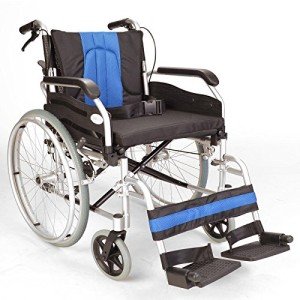How Bariatric Wheelchair 24 Inch Seat Became The Hottest Trend In 2024

Bariatric Wheelchair Seat Width
Seat Width
Having the correct seat width is essential to wheelchair users who invest longer durations in their chairs. Too narrow a seat will trigger pressure on the hips and thighs which could result in sores or pressure points. Having too wide a seat can likewise make it tough for the user to reach the hand rims to move themselves or maneuver in small spaces.
To measure the correct seat width an individual would sit on a chair typically and have their measurement taken throughout their lap at the widest point which is usually their hips. A wheelchair determining tape can be used to measure this, but a backyard stick is preferred as it prevents individuals from wrapping the tape around their hips which would provide an unreliable result.
The standard wheelchair seat width is 16" (narrow adult), 18" (standard adult), and 20" (wide grownup). For bariatric heavy duty transport wheelchair , a 24" seat is readily available. This sturdy extra broad bariatric wheelchair from Medline includes swing-away footrests, a carbon steel frame with rust- and chip-resistant chrome plating, and easy-to-clean vinyl upholstery. It has a weight capacity of 500 pounds.
Seat Depth

Typically, the seat depth of a bariatric wheelchair was included 2" to the measurement taken at the user's widest point (generally their hips). This was suggested to accommodate additional layers of clothing that may be worn during winter. However, this practice is ending up being less typical as wheelchair users have the ability to invest more time inside and are not wearing long coats. This makes the seat depth of a chair lesser when choosing a bariatric wheelchair. However, it is still essential to pick an option that provides appropriate support for bigger users.
The Medline folding extra broad bariatric manual wheelchair includes a comfy 24" seat width and a sturdy slide tube silver vein frame. It also has an adjustable axle and tool-free elevating legrests.
Seat Height
When it pertains to identifying the appropriate wheelchair seat width you must always measure from the user's largest point which is usually their hips. You will also need to consider whether the user is going to be wearing a winter coat as this may add 2" to the width needed.
When a wheelchair remains in usage it ought to just be run on level surface areas with the wheel locks fully engaged. This is to avoid the chair from having the ability to move inclines that are 10 degrees or greater. It is likewise crucial to keep in mind that any activity that may shift the center of gravity in the chair must be made with care. This includes grabbing items that need the individual to lean out of their seat or attempting to stand from it.
Whenever you have the chair in usage it is suggested that you frequently examine it for damage and oil any areas that are deemed needed. For instance, the casters should be oiled by getting rid of the caster fork and using a multi-purpose grease to use to the caster stem bearings. Also, the foot plates can be changed by loosening the bolt and then moving them to the preferred position. This enables the feet to sit conveniently on the footplate and avoids any pressure points from forming. visit the next internet site can be really uncomfortable for the user and if left ignored, can result in press sores.
Weight Capacity
Bariatric wheelchairs are created to support more weight than standard wheelchairs. This makes them stronger and better equipped to deal with falls. They are also usually bigger and broader, making them less maneuverable in tight areas than basic wheelchairs. They require automobiles with special ramps and lifts to fill them, in addition to motorists who understand how to finest transport them from one location to the next.
When picking a wheelchair, consider its weight capacity as it will be the primary determining consider whether it will accommodate your guest's needs. The weight capacity of the chair is frequently listed as a fixed load, indicating that it indicates the quantity of weight the chair can conveniently hold while standing still. However, some manufacturers also list an active load that is based upon a drop test and can mimic the effect of someone sitting down in the chair. This may be a more reliable measurement of the weight limit, depending on your needs.
If you prepare to carry out activities that move your center of gravity in the seat (such as reaching for items), be sure to have front casters pointed in a forward instructions and wheel locks engaged so the chair will not tip over. Likewise, inspect that casters are lubed regularly to avoid extreme wear and abrasions. The lubrication procedure involves getting rid of the fork, separating the caster from the wheel, and greasing the caster stem bearings with premium multi-purpose grease.
